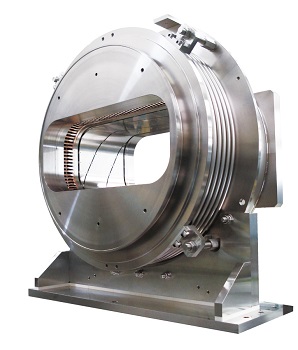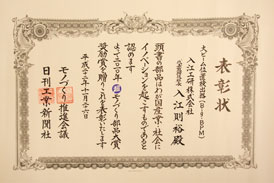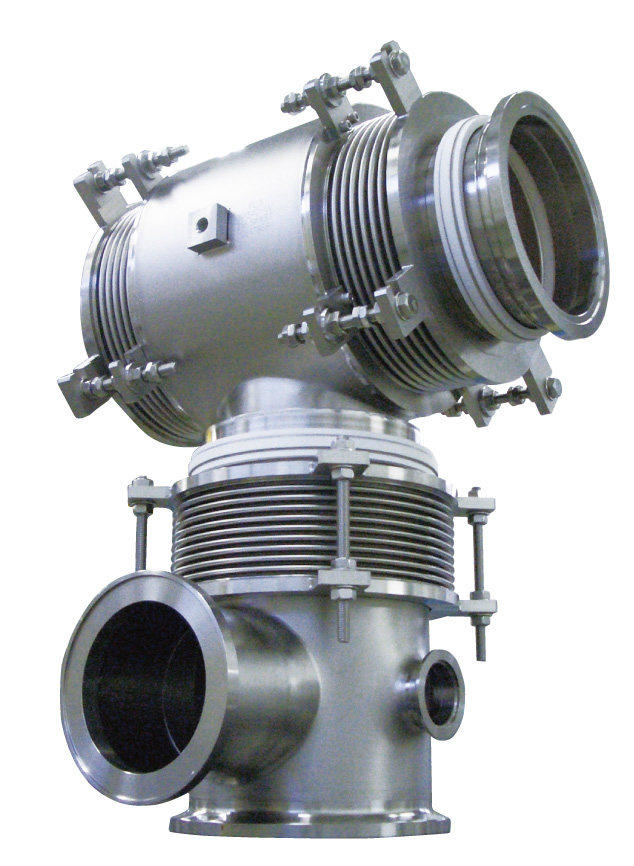- HOME
- HOME
- Search by Purpose
- Titanium Bellows
Titanium Bellows
Possibilities with titanium bellows
|
Due to their unique properties, titanium bellows have a wide range of applications, from aerospace to medical and marine exploration.Innovation and progress in these fields is often underpinned by advances in materials science, and materials such as titanium are key to facilitating this progress. The development and application of titanium bellows will therefore continue to play a key role in paving the way for a sustainable future. |
Track record of deliveries
|
This device (monitor) detects the position of the proton beam in the injection section of the 3 GeV synchrotron at the Japan Proton Accelerator Research Complex (J-PARC) and consists of a rectangular detector body and a circular vacuum vessel with flanges at both ends covering the outer part of the detector. In order to make the electrodes large and rectangular, and to reduce pressure effects to zero, the outer shell of the vacuum vessel and the housing fixing the electrodes were separated. The electrodes, vacuum vessel and bellows are made of titanium to ensure radiation resistance and weight reduction. Electrode-to-electrode capacitance variation characteristics have been improved, and capacitance changes due to internal vacuum and atmospheric pressure have also been reduced to zero. Welding shielding gas conditions and fixtures have been studied and ultra-low oxidation welding technology has been developed. |
Specification
|
Bellows: with integral shielding fingers for easy connection to deformed ceramic channels. |
Test and inspection
|
※Achievable vacuum: <10-7 Pa
|
Awarded‘Incentive Prize’of the"CHO MONODZUKURI"Innovative Parts and Components Award 2010
|
Our “Big BPM (beam position monitor)” received the encouragement prize of “CHO” MONODZUKURI Innovative Parts and Components Award 2010 by the Conference for the Promotion of MONODZUKURI and Nikkan Kogyo Shimbun, Ltd. (sponsored by the Ministry of Economy, Trade and Industry, and the Japan Chamber of Commerce and Industry). This prize is granted to awarded to enterprises whose parts play a significant role in support of Japanese industry and society, with the spotlight directed on parts and members playing a behind-the-scenes role as a the source of manufacturing competitiveness. The awards ceremony was held at the KFC (Kokusai Fashion Center) Hall on November 26 (Fri). We are grateful for being able to contribute to improving the smooth operation performance at the J-PARC facility that will transmit our technological capabilities and our state-of-the-art science and technology information around the world. |
Track record of deliveries
|
A pump port with double-sided bellows has been supplied for the KEKB 50Gev synchrotron ring, an electron-positron collider at the High Energy Accelerator Research Organisation. Both the flange and bellows are made of two types of titanium to cope with radiation resistance, ultra-high vacuum and light weight. |
Specification
Individual bellows specifications. Pressure: (Internal) Vacuum (External) Atmospheric pressure Temperature: 20°C (MAX 150°C during baking) Displacement: Axial displacement ±10 mm Axial displacement ±1 mm Displacement perpendicular to axis ±1 mm Bellows life: Bellows in beam section Displacement 100 times Displacement 10,000 times Life: Bellows at pump port 1000x displacement 100,000 times displacement Single unit RF contact specification (displacement of one end flange) Displacement: Axial direction -10mm, +5mm Angular axial direction ±1mm Angular displacement 0.5°.
|
Test and inspection
|
Inquiry
For document requests and inquiries,
Please contact us using the email form below or by phone.




